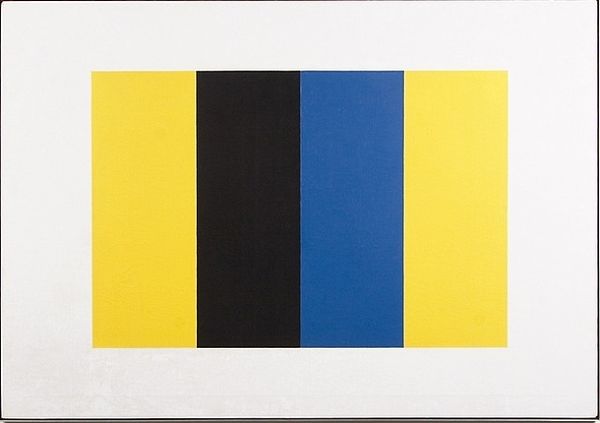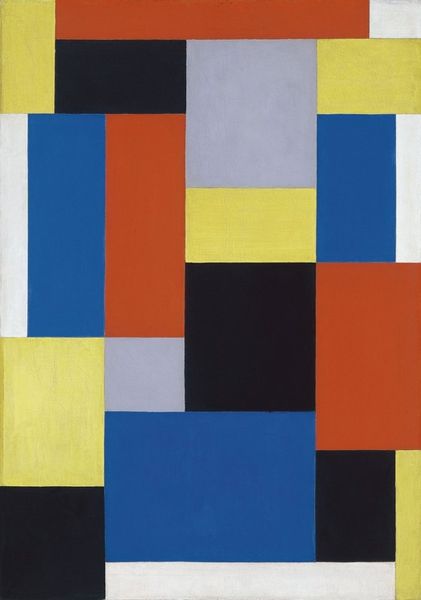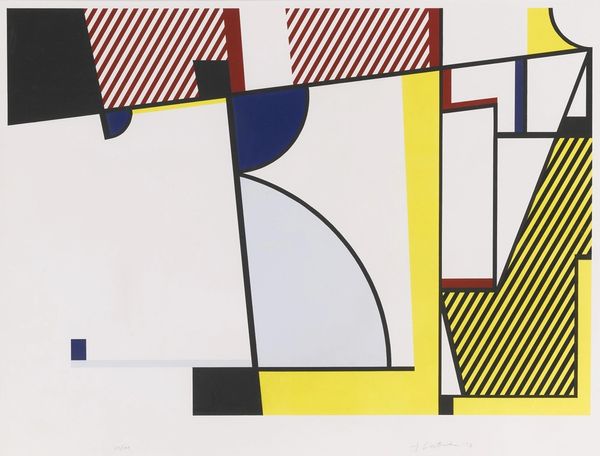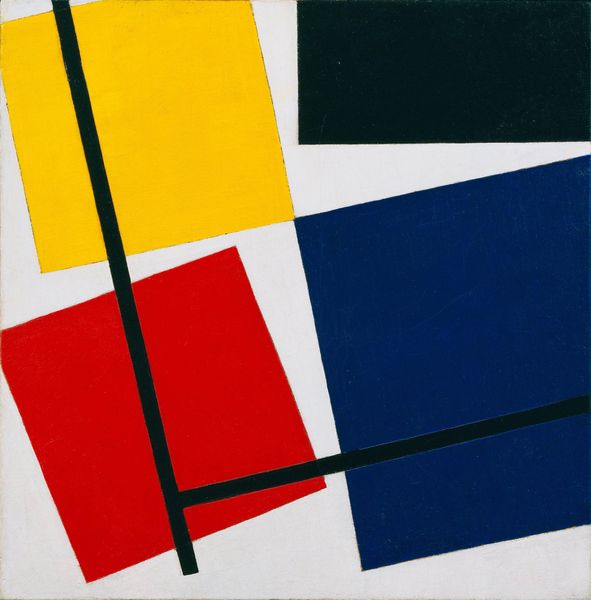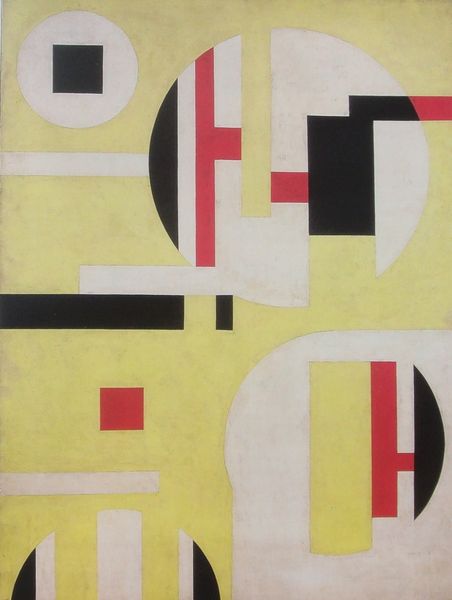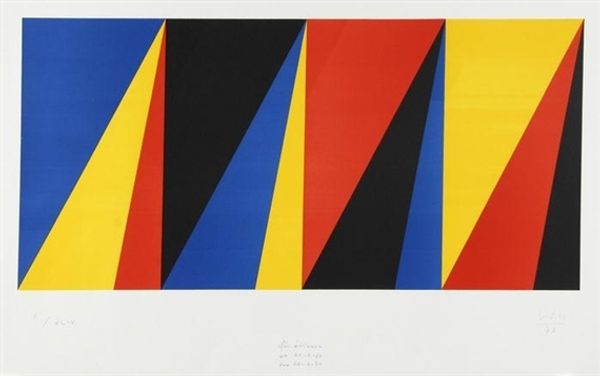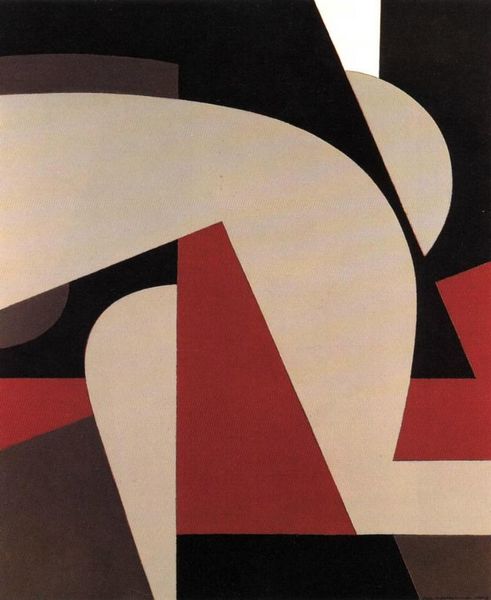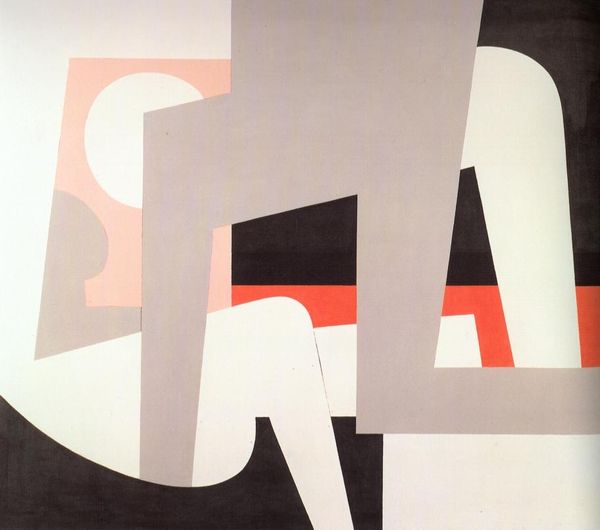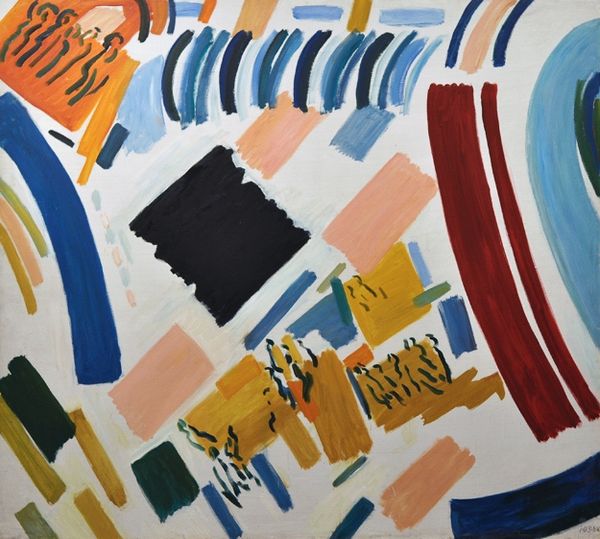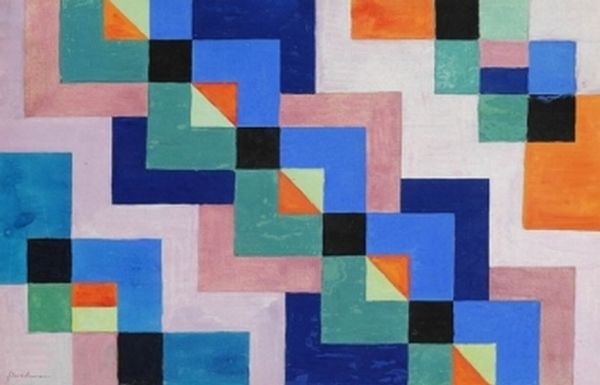
painting, acrylic-paint
#
painting
#
pattern
#
pop art
#
colour-field-painting
#
acrylic-paint
#
geometric
#
geometric-abstraction
#
abstraction
#
pop-art
#
line
#
modernism
Copyright: Lennart Rodhe,Fair Use
Curator: Let's delve into Lennart Rodhe’s "Kontraster I" from 1954, a striking acrylic on canvas. Editor: Immediately, I’m struck by its dynamic tension. The interplay of bright yellow, stark black, cobalt blue, and white geometric forms creates an almost musical rhythm. Curator: Absolutely. Rodhe, as a prominent figure in Swedish modernism, was deeply engaged with the political undercurrents of post-war Europe. Abstraction for many artists at this time, served as a tool of cultural reconstruction. This painting engages with colour-field painting, embracing abstraction as a symbol of radical societal change, offering freedom from representational norms and promoting a more progressive understanding of art’s function in social change. Editor: Yes, and observe the powerful symbolism at play! The bold lines, the contrasting colors, the very title suggests Rodhe is exploring dualities – order and chaos, light and darkness. This language of shapes really conveys a cultural narrative – even archetypes. The contrast isn't just visual, it feels deeply psychological. These geometric forms have an almost universal language. Curator: Indeed. While Rodhe may not have been explicitly referencing specific political events, his choice of abstraction was inherently a political statement. Consider too the availability of new materials like acrylic paints. This offered the opportunity for creating fields of vibrant, uniform colour – pushing the boundaries of established norms around acceptable art, mirroring shifting attitudes to power and conventional social roles. Editor: I appreciate how this deceptively simple composition evokes such profound ideas! The composition reminds me of early constructivist manifestos, repurposing simple forms and stark contrasts for almost propagandistic impact. This makes me curious what shapes and colors Rodhe adopted, how their established meanings in society influenced his choices. Curator: Reflecting on "Kontraster I" within its historical context invites us to rethink not just what we see, but also how artistic expression became a potent form of activism through abstraction. Editor: For me, this artwork becomes a potent example of how art speaks across decades, using a familiar language of shapes and colors that still provokes thought and feelings, and gives new insight into our culture’s development.
Comments
No comments
Be the first to comment and join the conversation on the ultimate creative platform.
